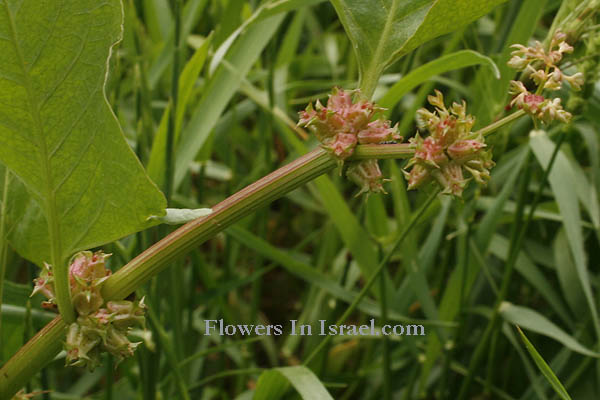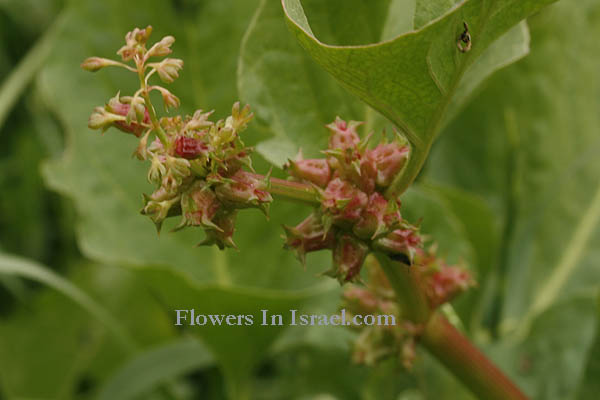Hebrew: אמיך קוצני, Arabic: حميض, Egypt: ضرس العجوز "Dirs El-'Agouz"
| Scientific name: | Emex spinosa (L.) Campd. | |
| Common name: | Spiny threecornerjack, Devil's thorn | |
| Hebrew name: | אמיך קוצני | |
| Arabic name: | حميض | |
| Egypt: | ضرس العجوز "Dirs El-'Agouz" | |
| Family: | Polygonaceae, ארכוביתיים |

Location:Napoleon Hill, Ramat Gan |
| Life form: | Therophyte, annual | |
| Spinescence: | Fruits | |
| Stems: | 30-60cm; erect or ascending, branched, base often reddish | |
| Leaves: | Alternate, rosette, entire, smooth | |
| Inflorescence: | Male flowers in terminal and axillary, pedunculate clusters; female axillary, sessile | |
| Flowers: | Green, membranous | |
| Fruits / pods: | Fruit an achene enclosed in persistent hardened perianth, 4–8 mm long, 2.4–5 mm wide and thick; perianth 3-angled, each face with 8–12 pit-like depressions, spines 1.5–3 mm | |
| Flowering Period: | January, February, March, April, May, December | |
| Habitat: | Shrub-steppes, Desert, Sand | |
| Distribution: | Mediterranean Woodlands and Shrublands, Semi-steppe shrublands, Shrub-steppes, Deserts and extreme deserts | |
| Chorotype: | Mediterranean | |
| Summer shedding: | Ephemeral |

Location:Napoleon Hill, Ramat Gan Derivation of the botanical name: Emex, from Latin ex, "out of," and Rumex (genus name for docks and sorrel), referring to the segregation from that genus. spinosa, spiny.
|